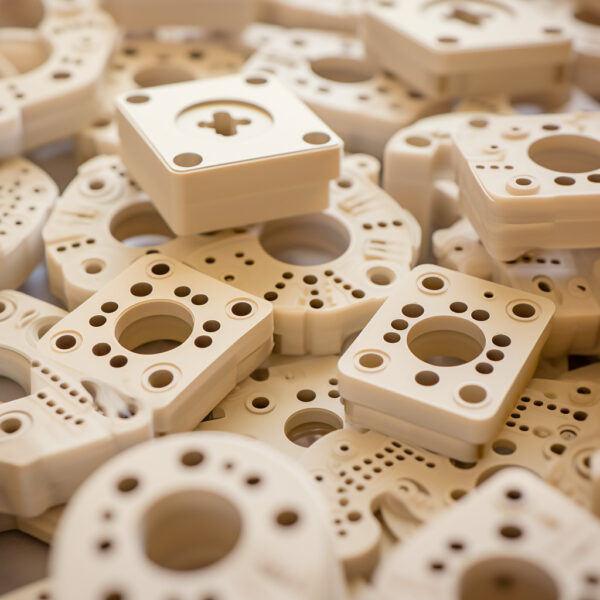
In high-demand industries, the term "PEEK injection molding" refers to forming Polyether Ether Ketone in its molten state to create precision parts. With a stable PEEK molding process, manufacturers can produce dimensionally consistent and structurally complete components in short cycles. Unlike machining, which relies on incremental cutting, injection molding forms parts in a single step. Machining is ideal for low-volume or prototype stages, but in mass production its cutting time, edge strength concerns, and material waste become more significant. This is why molding has become the preferred route for many semiconductor components.
Common PEEK parts in semiconductor applications include jigs, sliders, positioning elements, and self-lubricating sealing components. These applications demand that the material performs reliably under heat, friction, and fluctuating stress. To achieve this, a stable temperature-controlled PEEK injection molding process is essential. The material must be thoroughly dried prior to melting because moisture can cause the melt to degrade at high temperatures, forming silver streaks and gas marks that weaken structural integrity. Machined stock materials are usually pre-formed and less sensitive to moisture, but injection molding depends heavily on raw material condition. This sensitivity makes the molding "process window" a decisive factor for final quality.
From a processing standpoint, PEEK molding emphasizes overall process stability, including melt temperature, mold temperature, injection speed, and holding pressure. These parameters collectively affect crystallinity, shrinkage behavior, and dimensional repeatability. Machining relies on tooling paths and clamping accuracy, while injection molding can create the internal structure and outer geometry in one shot, reducing fixture errors and multi-step deviations. This is also why molding typically becomes more time-efficient at scale. For parts requiring high toughness, continuous injection provides molecular chain orientation that improves performance consistency. By contrast, turning and milling introduce slight stress concentrations in cutting zones, which can affect long-term fatigue behavior.
Semiconductor components are usually produced in batches with frequent cycles, giving PEEK injection molding a clear productivity advantage. After molding, only basic inspection and minor deburring are needed before assembly or validation. At equivalent volumes, the time cost is notably lower than machining. Although molds require upfront investment, industries that require stable, repeatable supply generally accept this preparation period. Mold design is fundamental to stability, including venting, cooling channels, and gate type, all of which influence melt flow and crystallization uniformity. Good upfront design reduces the need for later mold revisions and helps the PEEK molding process stay within an effective, stable window.
Reliable PEEK parts depend on more than just equipment and mold. Manufacturers must coordinate melt pressure, back pressure, and holding times. These parameters leave structural "fingerprints" inside the part, which is why inspection is essential. Semiconductor components often have strict tolerance requirements. By managing the process window and maintaining reproducible molding curves, PEEK injection molding ensures batch-to-batch consistency, offering a process advantage over single-piece machining. Machining allows flexible post-adjustments, but cannot match molding in performance uniformity.
As supply chain demands accelerate, material stability, cycle efficiency, and higher yield have become core concerns. PEEK injection molding offers an effective balance between structural integrity, cycle reliability, and cost control. With fast and dependable molding solutions, PEEK meets the long-term performance needs of semiconductor components. To maintain its full performance benefits, drying, temperature control, and process validation are indispensable. These requirements set PEEK molding apart from standard plastics processing. When controlled properly, molded PEEK components deliver reliable performance in high-temperature and high-stress environments, enhancing sustainability and durability for semiconductor applications.